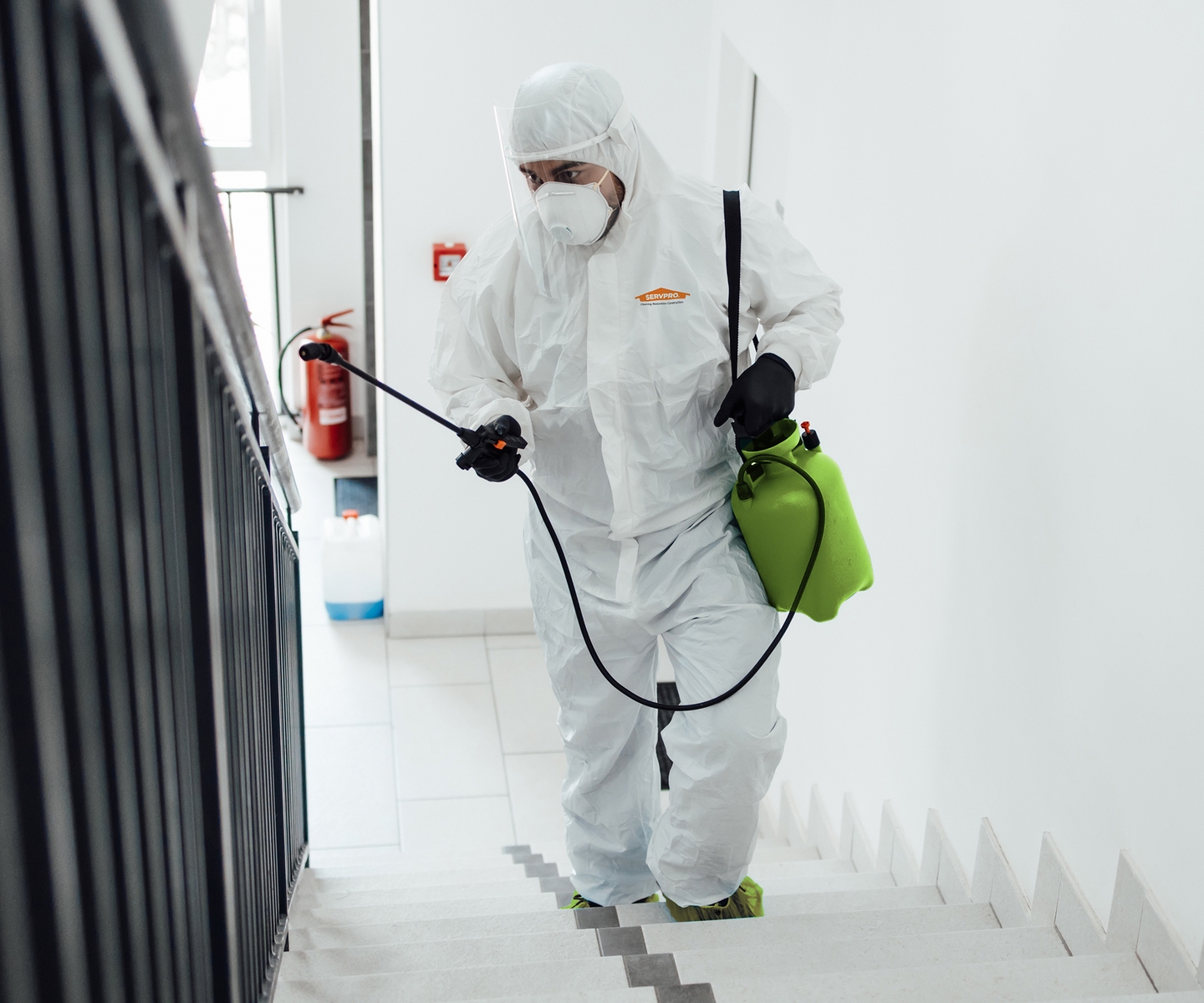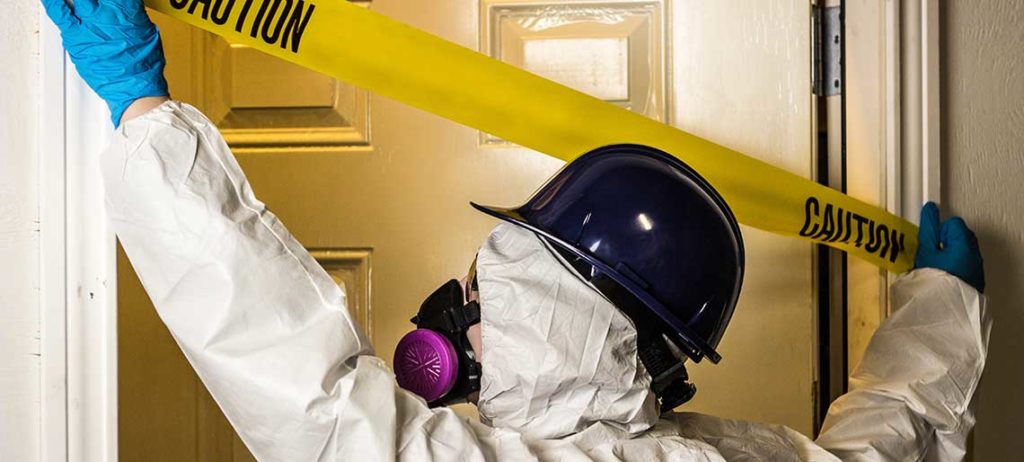Mold Remediation Providers: Securing Your Building from Mold Damage
Mold Remediation Providers: Securing Your Building from Mold Damage
Blog Article
Expert Biohazard Cleansing and Decontamination for Blood, Bodily Fluids, and Hazardous Products
The possible health threats associated with exposure to biohazards emphasize the vital requirement for careful handling and thorough cleanup. As we navigate the complex landscape of biohazard cleanup, recognizing the subtleties of policies, compliance, and the specific tools at play ends up being imperative in making sure a risk-free and complete purification procedure.
Health Threats of Biohazard Exposure
Exposure to biohazards postures substantial health risks that can cause severe repercussions for communities and people alike. Biohazards encompass a variety of organic compounds, consisting of blood, physical fluids, mold and mildew, bacteria, viruses, and various other potentially transmittable materials. When people come right into contact with these biohazards, whether via crashes, incorrect handling, or ecological exposure, they encounter the threat of having severe diseases or conditions.
Among the primary health dangers linked with biohazard exposure is the transmission of transmittable conditions. Bloodborne pathogens such as HIV, hepatitis B and C, and different germs can be existing in biohazardous products, presenting a direct hazard to human health and wellness. Breathing in air-borne biohazards like mold spores or entering contact with polluted surfaces can also cause breathing issues, allergies, and other negative health impacts.
Furthermore, biohazard exposure can have lasting health and wellness ramifications, with some diseases materializing years after the initial contact (Blood Cleanup). Therefore, it is important to focus on correct biohazard cleaning and purification to alleviate these wellness threats and guarantee the safety and security of people and communities

Specialized Educating for Biohazard Clean-up
When it involves managing biohazard clean-up efficiently and securely, specialized training plays a fundamental duty in ensuring correct purification treatments are adhered to. Biohazard cleaning calls for certain knowledge and abilities to successfully alleviate threats associated with bloodborne pathogens, physical liquids, and hazardous materials. Specialists learnt biohazard cleanup undertake rigorous guideline on how to safely deal with, remove, and get rid of biohazardous materials to avoid contamination and direct exposure.
Specialized training for biohazard cleaning covers a series of essential topics, including proper individual safety equipment (PPE) usage, bloodborne virus awareness, purification techniques, and contaminated materials disposal methods. Individuals educated in biohazard clean-up are furnished with the essential competence to analyze contamination degrees, determine prospective risks, and carry out proper cleaning treatments in conformity with regulatory requirements.
Constant training and education are paramount in the field of biohazard cleanup to remain updated on the latest purification innovations, safety and security protocols, and guidelines. By spending in specialized training, biohazard clean-up experts can efficiently reply to emergency situation cleaning scenarios and safeguard both public wellness and the environment.
Relevance of Proper Decontamination Methods
Using proper decontamination methods is crucial in biohazard cleaning to properly remove dangerous materials and lessen health and wellness dangers. Efficient decontamination not just ensures the elimination of noticeable traces of blood, physical fluids, and other biohazards but likewise targets unnoticeable virus that may posture significant wellness threats if not properly gotten rid of. By adhering to rigorous decontamination methods, educated experts can considerably lower the threat of direct exposure to dangerous microbes, infections, and bacteria that might cause infections or conditions.
Proper decontamination techniques entail the usage of specific tools and disinfectants that are specifically developed to reduce the effects of biohazards successfully. Comprehensive cleaning and sanitation of infected locations are vital to stop the spread of virus and ensure a safe atmosphere for occupants. Additionally, the right disposal of biohazardous waste complying with purification treatments is essential in preventing contamination of various other surfaces or people.

Tools and Devices for Safe Clean-up
The appropriate tools and tools play a crucial duty in ensuring the risk-free and reliable cleanup of biohazardous materials. When handling blood, physical liquids, or hazardous materials, biohazard cleansing specialists depend on specialized equipment to lessen direct exposure risks and thoroughly sanitize the affected area. Personal protective devices (PPE) such as gloves, safety glasses, coveralls, and masks top article are important to secure versus straight call with possibly infectious materials. Additionally, biohazard cleaning packages containing anti-bacterials, absorptive products, and biohazard bags are used to safely dispose and contain of polluted things. Blood Cleanup.
Advanced cleansing devices Read Full Article like hospital-grade anti-bacterials, HEPA-filtered vacuums, and fogging machines are used to sanitize surface areas and get rid of biohazards successfully. Specialized tools such as sharps containers and biohazard garbage disposal containers are utilized to securely manage sharp things and biohazardous waste materials. By utilizing the ideal devices and devices, biohazard cleansing specialists can ensure a complete clean-up process that focuses on security and lessens health threats for both workers and owners of the damaged room.
Rules and Compliance in Biohazard Cleansing
Correct adherence to laws and conformity criteria is vital in biohazard cleansing to ensure the safety of both personnel and the environment. Federal government companies such as OSHA (Occupational Safety And Security and Wellness Administration) and the EPA (Environmental Defense Firm) have actually developed specific standards for biohazard clean-up procedures to lessen health risks and ecological contamination. These guidelines cover a series of facets consisting of the handling, transport, and disposal of biohazardous products, along with the needed training and protective tools required for personnel entailed in the clean-up process.
Biohazard cleansing firms should remain updated with these regulations to guarantee that their operations meet the needed security standards. Failing to abide with these regulations can result in severe effects, consisting of fines, lawsuit, and endangering the health of people and the environment. By adhering to strict regulations and conformity measures, biohazard cleansing business can properly reduce risks and ensure a comprehensive and safe clean-up procedure for all parties involved.
Verdict
Finally, biohazard cleaning and decontamination call for customized training, correct strategies, and adherence to policies. Direct exposure to blood, bodily liquids, and unsafe products presents significant health and wellness dangers, making it important to visit site make use of the ideal equipment and tools for secure cleaning. By following strict methods and guidelines, specialists can effectively minimize the risks related to biohazard exposure and make sure the safety and security of both themselves and others.
As we navigate the complex landscape of biohazard cleaning, comprehending the nuances of regulations, compliance, and the specific tools at play comes to be essential in ensuring a secure and detailed purification process. (Blood Cleanup)
When it comes to managing biohazard clean-up successfully and securely, specialized training plays a basic function in making sure correct decontamination treatments are adhered to.Using appropriate decontamination techniques is critical in biohazard cleaning to successfully eliminate dangerous materials and lessen wellness risks. Furthermore, biohazard cleansing kits including anti-bacterials, absorbent products, and biohazard bags are made use of to securely contain and get rid of of contaminated products.
Federal government companies such as OSHA (Occupational Security and Health Administration) and the EPA (Environmental Protection Agency) have established particular standards for biohazard clean-up treatments to lessen wellness risks and environmental contamination.
Report this page